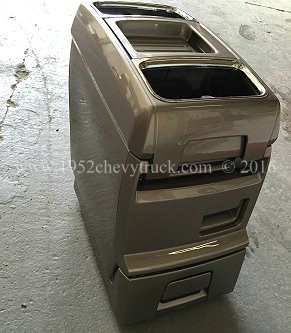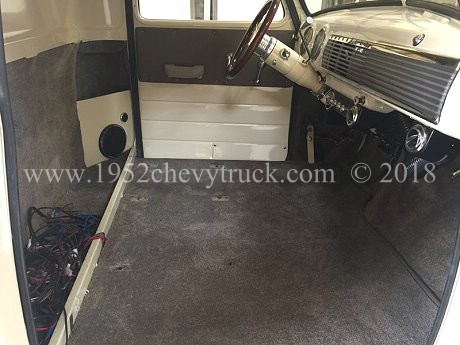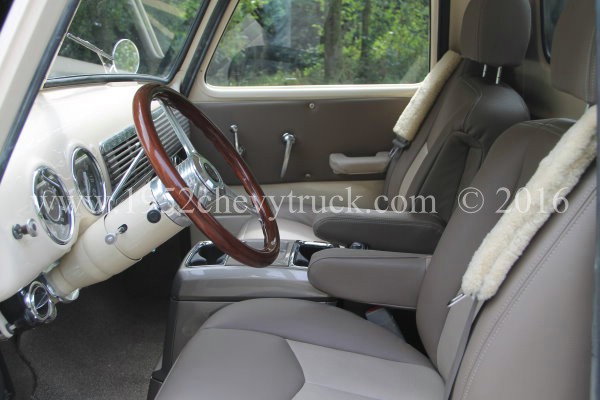


At 70mph the wind noise from the gutter rails is considerable. This is not the only source of wind noise
and other areas need to be addressed but it is a major source. The decision was made to remove the gutter
rails. This was not an easy decision as affecting the outward 1952 appearance of the truck is not
desirable for this project. However, it is not a very noticeable removal and the affect on the wind
noise is so significant that it was decided to go ahead. The fact is that wind noise can mean that
at high speed you can't hear the passenger without shouting and you can't hear the radio either.
Modern cars do not have gutter rails that scoop the air. The rails are concealed and wind does not
get into them, The problem with removing the gutter rail if that water may fall into the truck.
This will be tested before the second rail is removed.
The gutter rail was removed using a combination of 1mm cutting disk to start it at the ends and then a
small thin steel chisel to cut through the spot welds. The rail was removed carefully and intact
to that the process was reversible in the future if required. (The rail could be put back on.)
Once the rail first rail had been removed the area was cleaned with a paint and rust removal pad
in a mini grinder, a wire brush in a drill and wet and dry paper. It was then etch primed, primed
and finished with top coat. Testing will be done before the second rail is to be removed.






Testing with one rail removed was done on the 21st Aug 2011
A round trip of about 80 miles to a small local show. Driving at 70mph there was no wind noise
experienced by the passenger from the area around the gutter on the right hand side of the vehicle,
however, on the drivers side it was considerable. The passenger on the right could only hear wind noise
from the gutter that was still on the left hand side. This was the side furthest away from the passenger.
This test proved conclusively that the modification was worthwhile. Looking at the pictures, the smooth
appearance without the cutter rail, in our opinion, was an improvement that looked very good.
When the doors are restored, attention will be paid to an improved seal around the doors.
This will stop water and draughts from entering the cab through the poor 1952 rubber seals.
August 2011. Wheels and Tyres.
A whole page has been dedicated to this subject
Click here for "Wheels and Tyres".
Oct./Nov 2011. Fitting speakers and an amplifier.
Since the fuel tank had been removed a few years ago as detailed on this site, behind the seats is now
used as a storage area. Indeed, it can be used to carry two small suitcases. It was also planned to fit a
sound system in the truck and speakers where to be fitted into the corners of the cab at the bottom
of the B pillars behind the seats. This does not affect the suitcase storage area.




The design of the rear speaker enclosures (Oct / Nov 2012) -
The bottom corner of B pillars was a good choice as it is largely wasted or unusable
space and it also provides quite a large volume. A large volume enclosure is good for base response.
Since the rear of the speaker enclosure is the curved lower B pillar, (rather than flat sided) this
is also acoustically ideal as this curved shape massively reduces internal sound reflections.
In addition, the curved steel in this part of the truck is very rigid and much less prone to
resonances compared to flat metal panels. The inside of the curved B Pillar was lined with shultz
as this provides panel damping. It is another anti drumming material.
The material chosen for the speaker baffle was 10mm thick ply wood lined with Dynamat Xtreme
It was decided to design a shelf / storage compartment into the top of the speaker unit
Building the complex shape of the baffle took a great deal of time. Carpet was put inside the shelf.
Kenwood KFC-X1730P speakers were chosen. These consisted of a base unit, a tweeter and a crossover
network A 5 channel Kenwood amplifier was also purchased and was fitted under the passenger seat.



Testing -
Eventually a head end will drive a multimedia sound system but the speakers and amplifier were tested
using a portable CD player. The sound quality was excellent. Transparent clear voice tones, a full
sounding mid range and a very good base response. High levels were possible and there was no resonance.
This was a very successful project.
In a few days time the truck will again be driven to the NEC for the 2011 Footman James Classic car show
Preparations and work on the truck continues so watch this space.
Front speakers (April / May 2012) -











Centre radio console (May 2012)-






Update 2017 In 2016 the centre console and radio holder were re-painted.



Update 2018 In May 2016 the carpets were fitted around the rear speakers.
In 2017 improvements were made to the wiring so that removal was easier due to multiplugs being fitted.
The sub woofer goes on the floor behind the seats. The Pioneer amp goes under the passenger seat.















